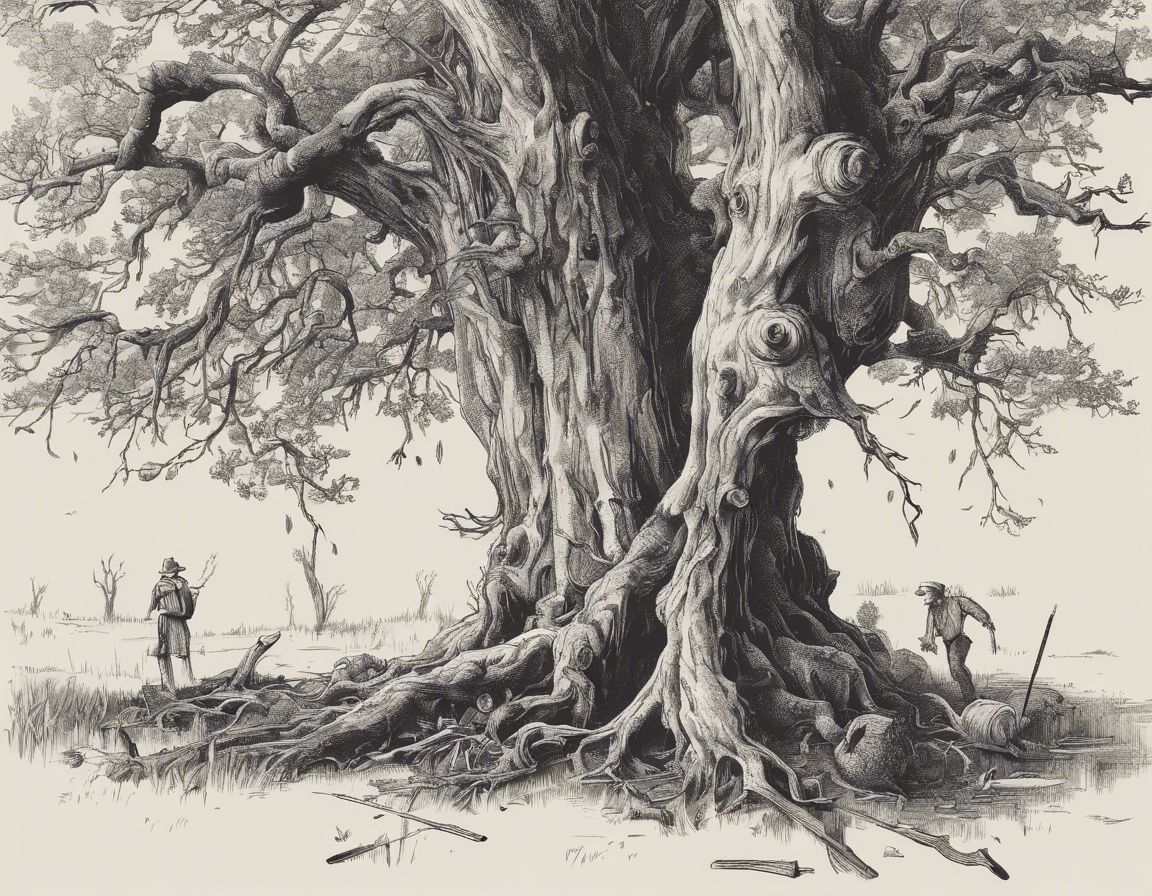The poem “On Killing A Tree” by Gieve Patel is a thought-provoking piece that delves into the complex process of cutting down a tree. Through vivid imagery and metaphorical language, Patel explores the resilience and tenacity of nature while also highlighting the destructive power of human intervention. In this blog post, we will conduct a detailed analysis of the poem, breaking down its key themes, literary devices, and underlying messages to provide a comprehensive summary of “On Killing A Tree.”
Themes
At its core, “On Killing A Tree” revolves around the themes of resilience, destruction, and the inherent connection between humans and nature. The poem highlights the tree’s remarkable ability to survive and regenerate, drawing a parallel between the tree’s life force and the human will to persist in the face of adversity. Simultaneously, it underscores the destructive impact of human actions on the natural world, emphasizing the irreversible damage caused by man-made interventions.
Structure and Literary Devices
Patel’s use of extended metaphor is a prominent literary device throughout the poem, as he compares the process of cutting down a tree to a brutal act of murder. This metaphor serves to underscore the violence and finality of the tree’s destruction, creating a sense of tension and unease in the reader. Moreover, the imagery in the poem is vivid and evocative, with descriptions of the tree’s roots, bark, and branches painting a detailed picture of nature’s strength and beauty.
Key Messages
Through “On Killing A Tree,” Patel conveys a powerful message about the delicate balance between mankind and the natural world. The poem serves as a poignant reminder of the consequences of human intervention in the environment, urging readers to reflect on their own impact on the planet. By portraying the tree as a symbol of resilience and vitality, Patel emphasizes the importance of preserving and protecting the natural world for future generations.
Conclusion
In conclusion, “On Killing A Tree” is a compelling work of poetry that invites readers to contemplate the fragile interplay between man and nature. Through its rich imagery, metaphorical language, and profound themes, the poem prompts us to reconsider our relationship with the environment and the consequences of our actions. By dissecting the poem’s key themes, literary devices, and underlying messages, we gain a deeper understanding of Patel’s complex and thought-provoking exploration of the act of destroying a tree.
Frequently Asked Questions (FAQs)
- What is the central theme of “On Killing A Tree”?
-
The central theme of the poem is the resilience of nature and the destructive power of human intervention.
-
How does Gieve Patel use metaphor in the poem?
-
Patel uses metaphor to liken the act of cutting down a tree to a violent act of murder, emphasizing the brutality of the tree’s destruction.
-
What is the significance of the tree in the poem?
-
The tree symbolizes resilience, vitality, and the interconnectedness of all living beings with the natural world.
-
How does “On Killing A Tree” reflect environmental concerns?
-
The poem raises awareness about the impact of human actions on the environment and the importance of preserving nature.
-
What emotions does the poem evoke in the reader?
- The poem evokes a range of emotions, including admiration for nature’s strength, guilt for human destructiveness, and reflection on mankind’s relationship with the environment.

